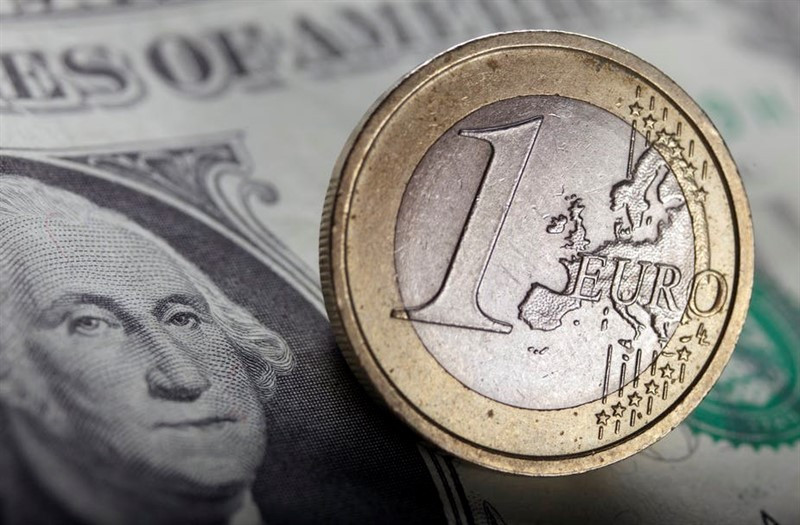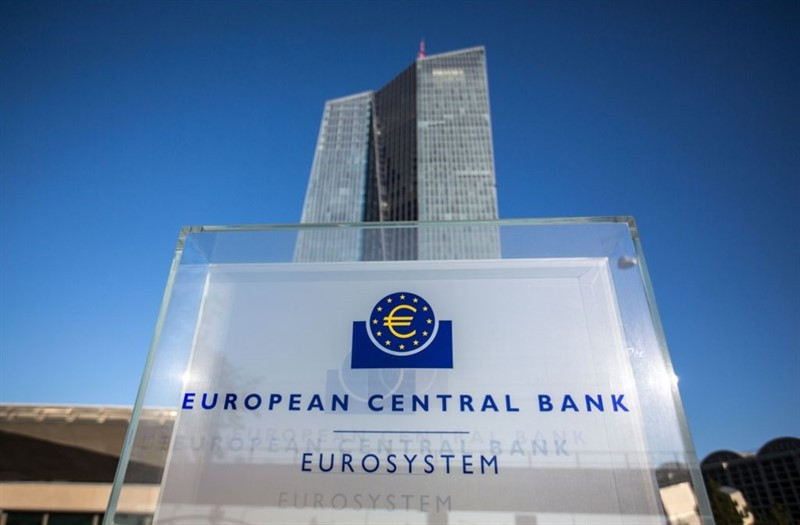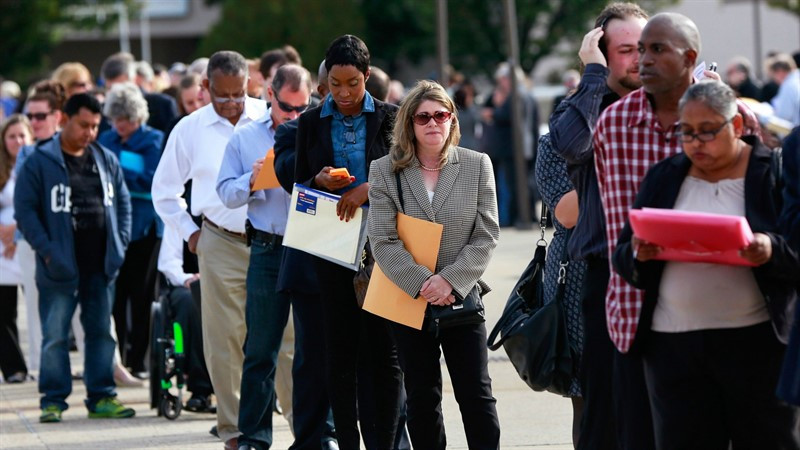The greenback is not thinking of slowing down yet, forcing the EUR/USD pair to slide down. Since the beginning of the week, it has lost almost 200 points.
At the same time, the USD index added 1.2%, coming close to the 100.00 mark.
This dynamic was largely facilitated by the fact that Federal Reserve officials are preparing for tough actions to prevent inflation.
The greenback strengthened against its main competitors by about 0.2%. This time, the dollar showed growth along with the key Wall Street indices, which were trading in the red for most of the session on Thursday, but managed to come out in the black at the end of trading, increasing by 0.1–0.4%.
A day earlier, the indices fell sharply after the publication of the minutes from the Fed's March meeting, which showed a more hawkish attitude of the central bank.
The document released on Wednesday reflected that the leaders of the Fed have practically agreed on a plan according to which the central bank's balance sheet will shrink at a pace of up to $95 billion per month. The beginning of the so-called "quantitative tightening" may be announced as early as May.
The minutes also indicated that many FOMC officials believe a rate increase of half a point or more is possible in the future if price pressure does not decrease.
Although these introductory statements were generally in line with market expectations, the Fed's willingness to act quickly and decisively to combat inflation gave momentum to the dollar and led to a sharp drawdown of stock indices.
However, when the dust settled somewhat after the publication of the minutes, investors realized that on the one hand, a more aggressive position of the Fed may seem a potential problem for stocks, on the other hand, it also indicates the seriousness of the central bank's intentions to curb inflation. Based on these considerations, the key Wall Street indices, in fact, were able to recover following the results of yesterday's trading. Thus, the Dow Jones rose by 0.25%, the S&P 500 rose by 0.43%, and the Nasdaq added 0.06%.
At the same time, participants in the foreign exchange market are paying attention to the tightening of rhetoric, instead of the Fed's attempts to cool the panic around inflation, believing that the US central bank will normalize monetary policy much faster than its European counterpart.
Bears on EUR/USD were able to push the pair even lower on Thursday, despite the hawkish signals from the European Central Bank.
ECB leaders at the meeting on March 10 showed their readiness to start curtailing incentives, and also said that the conditions for raising rates have either already been met or are about to be met, the minutes of the meeting published the day before showed.
"A large number of central bank members were of the opinion that the current high level of inflation and its persistence require immediate further steps towards the normalization of monetary policy. Nevertheless, it was considered reasonable to preserve the possibility of choice," the document says.
Money markets are putting in quotes an increase in the ECB deposit rate by a total of 60 basis points this year – now it is at -0.5%.
On April 14, the next meeting of the ECB will take place, at which the central bank may present a more detailed schedule for curtailing stimulus measures.
Nomura strategists believe that the euro will become cheaper even if the tone of the central bank is tougher. According to experts, this is due to the projected increase in the eurozone trade deficit and the continuing lag of the ECB from the Fed.
In March, the Fed raised its key rate for the first time since 2018, and, along with raising the rate by 50 basis points at once, it is likely to begin reducing its holdings of treasury bonds in May.
Meanwhile, the ECB is only preparing to stop buying bonds sometime in the third quarter.
Given that inflation in the eurozone is 7.5%, at the ECB meeting next Thursday, the calls of the hawks to raise rates may sound even louder.
Money markets are now expecting the first rate hike in the eurozone in July.
Some representatives of the ECB say that such a step is possible in September, others believe that the first rate hike may occur closer to the end of this year.
The ECB knows well the price of a political mistake. In the past, he has raised rates only to turn around quickly.
At the March meeting, ECB leaders did not provide guarantees for further curtailment of incentives, as well as rate hikes.
The ECB minutes provided only a small support to the EUR/USD pair. Touching the local high at 1.0930, it rolled back and closed yesterday for the sixth consecutive trading day in negative territory, near 1.0880, having sunk by more than 0.1%.
The single currency also failed to benefit from the retail sales data released yesterday in the eurozone.
On an annualized basis, the indicator in February increased by 5% against the projected increase of 4.8%. At the same time, the indicator value was significantly lower than the previous estimate of 8.4%.
Meanwhile, the US Department of Labor reported that the number of initial applications for unemployment benefits in the country last week decreased by 5,000, to 166,000 people. At the same time, the data for the previous week were revised downward from 202,000 to 171,000.
These data, along with another batch of hawkish comments from the Fed, provided additional strengthening of the dollar on Thursday.
The head of the St. Louis Fed, James Bullard, said yesterday that the US central bank will need to raise the discount rate to 3.5% this year to curb inflation. These are the rates that imply a half-point rate hike at each of the six remaining Fed meetings this year.
At the same time, the president of the Federal Reserve Bank of Chicago, Charles Evans, and the head of the Federal Reserve Bank of Atlanta, Rafael Bostic, confirmed that it would be advisable to move the policy to a neutral level by the end of the year.
"I am optimistic that we will be able to get to a neutral position, look around and find that we are not necessarily so far from the place where we need to go," said Evans.
"It's time to abandon our emergency position. I think it is really appropriate that we bring our policy closer to a neutral position, but we need to do it carefully," Bostik said.
These officials are calling for more moderation, which somewhat contrasts with the position of the head of the St. Louis Federal Reserve James Bullard.
"We need to move ahead of inflation, which is three times higher than the Fed's 2% target. We are talking about more ambitious steps than we have done in a long time," he said.
According to Bullard, even the generous application of the standard rules of monetary policy has shown that the Fed is lagging behind in the fight against inflation.
The next FOMC meeting will be held on May 3-4.
The futures market puts an 80% probability in the quotes that the federal funds rate will be raised by 50 basis points at once at this meeting.
Monthly data on the consumer price index in the United States will be published next week, on April 12.
The value of the indicator from 8% and above will contribute to a much more aggressive attitude of the Fed in the second quarter.
"This suggests that the dollar still has the potential to catch up with big rate changes, and we believe that the consolidation of the US currency around the levels reached is more likely than a correction at this stage," ING strategists noted.
Brown Brothers Harriman analysts expect the USD index to test the March 2020 high near 103 after overcoming the 100 level.
"After the psychological level of 100, the March 2020 high of about 103 is the next target of dollar bulls. We believe that the upward trend of the dollar remains unchanged, given the likely return of risk flight and an even more hawkish forecast for tightening the Fed's monetary policy," they said.
Some Fed officials have pointed to the second half of 2022 as the time to assess how the relatively rapid shift of the central bank in monetary policy will affect the economy.
According to some experts, further growth of the dollar is unlikely without a revision of the Fed's final rate in the markets.
The fact is that the path outlined by the head of the St. Louis Federal Reserve James Bullard, who is now perhaps the most aggressive politician in his reaction to inflation, goes beyond even what the markets currently expect from the US central bank.
According to the CME Group, investors expect the central bank to raise its interest rate in the range from 2.5% to 2.75% by the end of the year.
Westpac analysts believe that the greenback has approached the peak of the current cycle. They predict that the USD index will be at 97.40 in December 2022.
"Given the curtailment of fiscal support and the significant decline in real wages that has occurred over the past year, as well as the aggressive tightening of monetary policy, the risks to the growth of the US economy are shifting downward," they said.
"The US dollar is close to a peak, and a downward trend is likely to begin in July – as soon as the FOMC continues to raise rates by another 100 bps and begins quantitative tightening. We expect the USD index to fall from 99.00 in June to 97.40 in December 2022, and then to 95.30 in December 2023, as US economic growth will sink first into the trend area at the end of 2022, and then below trend in 2023," the bank said.
The greenback flirted with the psychological barrier at 100.00, leaving the EUR/USD pair under pressure on Friday.
After an unsuccessful attempt to recover, it moved to a decline and updated multi-week lows in the area of 1.0845-1.0840.
The single currency has suffered from new Western sanctions against Moscow, as the European Union is moving towards a ban on the supply of Russian coal to the region, which will take effect from August.
Given the price dynamics, in the short term, the possibility of further decline remains for the EUR/USD pair. The next descending barrier appears in the area of 1.0805 (the low of 2022 from March 7), and then the low of May 2020 at 1.0765 may come into play.
"The EU has taken the first real measure against Russian energy exports, banning the supply of Russian coal, starting in August. EU countries are beginning to realize that they will have to pay a certain price to hit the Russian energy sector – despite the fact that oil and gas remain outside of any ban for the time being, and this may contribute to maintaining pressure on the euro in the near future," ING economists noted.
"We still see mainly downside risks for EUR/USD, although a break below 1.0800 may not happen right now," they added.
The European currency is under pressure not only from the situation in Ukraine, but also uncertainty about the outcome of the presidential elections in France.
The first round of voting will be held on April 10.
Although incumbent President Emmanuel Macron is leading in opinion polls, his main rival Marine Le Pen, the candidate of the far-right National Unification party, is gradually closing the gap.
Thus, to determine the winner, most likely, a second round will be required, which will take place on April 24.
The decline in the EUR/USD pair is mostly due to the increase in the value of the US dollar. Nevertheless, the euro faces its own problems, Rabobank economists say.
"Not only have the polls ahead of the French presidential election caused concern in the market, the outlook for the eurozone economy is still very uncertain, given the issues related to energy security. Therefore, we have kept the monthly forecast for EUR/USD at 1.0800," they said.
The bank's three-month forecast for EUR/USD at 1.1000 suggests that Macron will remain president of France and that growth in the eurozone will continue this year, leaving market expectations for an ECB rate hike intact.
"Given the region's dependence on Russian energy carriers, it is difficult not to worry about the risks of stagflation for Europe if an embargo is imposed on Russian energy. This remains a potential risk for the euro in the coming months," Rabobank said.














